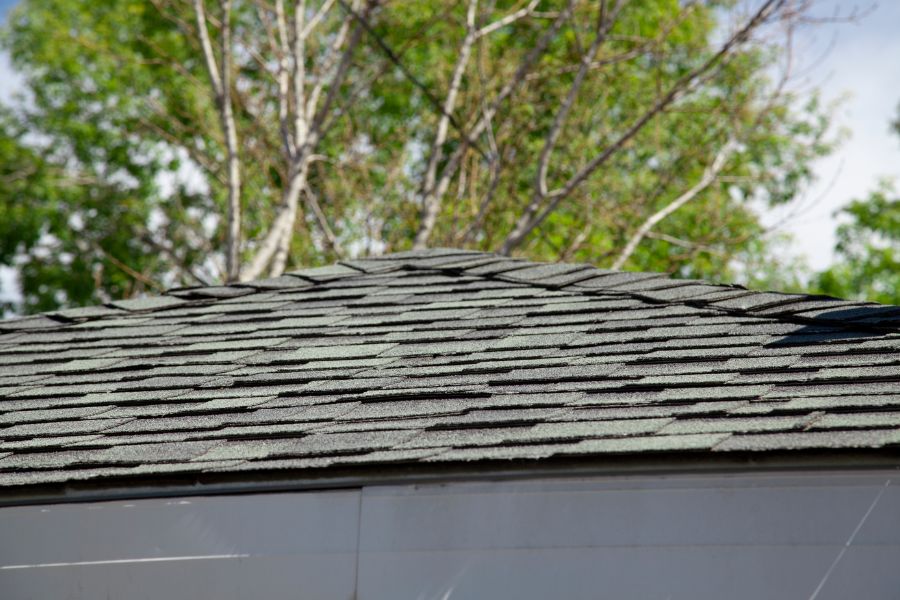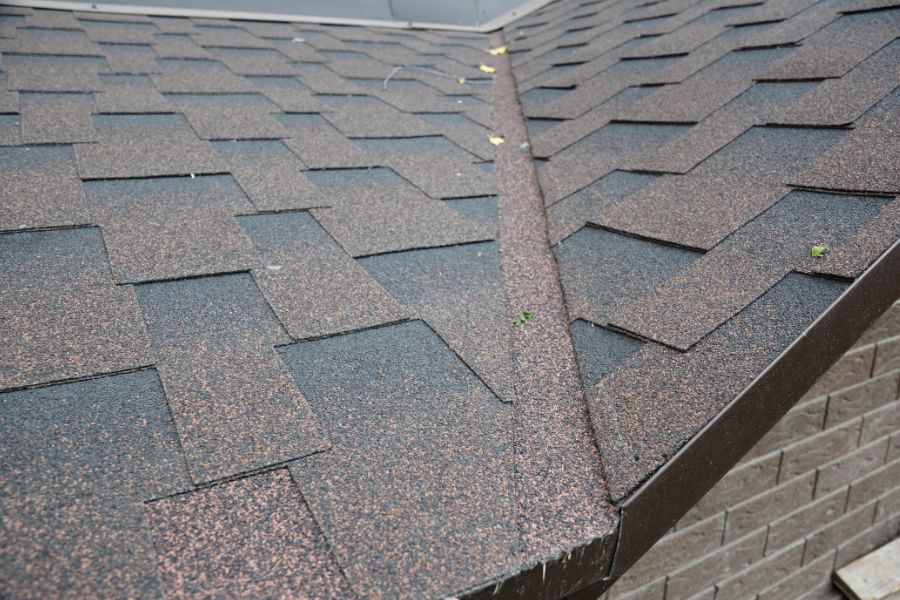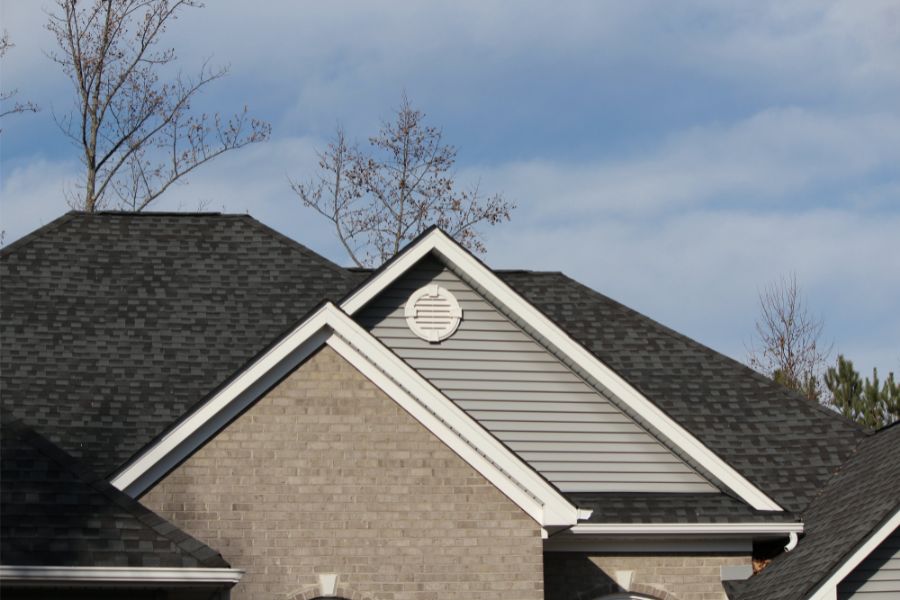Roofing 101: Understanding Your Roof’s Anatomy
Understanding your roof’s anatomy comprises knowing its key components like eaves, ridges, pitch, trusses, shingles, underlayment, flashing, and ventilation system. Each part plays a crucial role in your roof’s functionality by controlling water runoff, providing structural support, safeguarding against weather damage, preventing leaks, and maintaining energy efficiency. Moreover, gutters play an irreplaceable role in managing rainwater, protecting your home’s siding, and preventing basement flooding. Mastery of these components contributes to effective maintenance and informed decisions for potential replacements, resulting in extended roof longevity. Further exploration will provide a more profound comprehension of these essential elements and their roles.
Main Points
- The roof anatomy consists of key components: eaves, ridges, pitch, trusses, and roof frame that ensure structural stability and control water runoff.
- Shingles protect the roof from weather conditions, with their material and overlapping pattern aiding in durability and water runoff.
- Underlayment layers act as a shield against weather, protecting the roof structure and guiding water away from the roof deck.
- Flashing installed in prone water penetration areas redirects water to the drainage system, preventing leaks and preserving the roof’s longevity.
- Proper roof ventilation maintains balanced temperatures, preventing moisture build-up and mold growth and reducing cooling system load.
The Importance of Roof Anatomy
Understanding the intricacies of roof anatomy is vital as it greatly impacts not only the visual appeal of your home but also its structural strength and functionality. The roof is more than just a protective cap for your house; it is a complex system of interconnected elements that work together to withstand environmental challenges, regulate indoor temperatures, and prevent water damage.
Key components like eaves, ridges, pitches, and trusses each play a critical role in a roof’s design and function. Eaves, for example, help control water runoff, preventing it from seeping into the walls. Ridges, the highest points of a roof, provide a pathway for hot air to escape, aiding in ventilation. Pitch, or the steepness of a roof, affects how quickly water and snow can be shed, and it can also impact the aesthetic of your home. Trusses, the framework that supports the roof, ensure its structural stability.
Understanding these elements of roof anatomy can empower homeowners, architects, and builders to make informed decisions regarding roof design, maintenance, and repair. This knowledge is also essential for professionals in the roofing industry, enabling them to provide superior service to their clients.
Understanding Basic Roofing Terms
Delving into the terminology used in roofing can provide invaluable insights into the various components and their respective roles in the overall roof structure. To start, the ‘eaves‘ are the edges of the roof that overhang the face of the walls and, typically, throw water clear of the walls. This is essential to protect the building’s structure from water damage.
Next, ‘ridges‘ are the highest points of a roof, running along the length where two roof planes intersect. They are vital for proper drainage and prevention of water seepage. The ‘pitch‘ refers to the slope or steepness of a roof and is critical for water runoff. A lower pitch may not shed water as effectively, posing a potential risk for leaks.

The Role of the Roof Frame
The roof frame, often made up of trusses and rafters, serves as the backbone of the roof, providing the necessary structural support and determining its shape and pitch. Comprising carefully engineered wooden timbers or metal bars, the roof frame’s robust construction guarantees that it can withstand the weight of the roof covering, as well as external forces such as wind and snow loads.
Trusses, the most common type of roof frame, are pre-fabricated triangular structures that distribute the roof’s weight evenly across the building’s walls. They are designed to bear the load of the roof directly, reducing the need for load-bearing internal walls.
On the other hand, rafters are individual beams that run from the roof’s peak to its eaves. They require additional support from beams or internal walls and are typically used in more traditional or complex roofing designs.
The design and construction of the roof frame have a significant impact on the roof’s longevity, functionality, and aesthetic appeal. Whether it’s a simple gable roof or a complex mansard, the roof frame plays a pivotal role in defining the roof’s character and ensuring its structural integrity. Thus, understanding your roof’s frame is essential for effective maintenance and potential upgrades.
Shingles and Their Function
Integral to the external protection of a roof, shingles serve a crucial role in safeguarding the structure from adverse weather conditions and enhancing its overall aesthetic appeal. As a primary barrier against environmental elements, they shield the underlying structure from the damaging effects of rain, snow, wind, and sun exposure.
Shingles are typically made from various materials, such as asphalt, wood, metal, or tile. The choice of shingle material can greatly impact the durability, longevity, and maintenance requirements of the roof. For instance, asphalt shingles are popular for their cost-effectiveness and ease of installation, whereas metal shingles are known for their superior resilience and long lifespan.
The overlapping pattern in which shingles are arranged on a roof surface also plays a role in their function. This arrangement helps in effective water runoff, preventing the accumulation of moisture that could lead to structural damage.
In addition to protection, shingles also contribute to a roof’s energy efficiency. Certain types of shingles have reflective properties that can help regulate indoor temperatures, reduce energy consumption and contribute to a more sustainable living environment.
Understanding the importance of shingles is crucial to maintaining the integrity of a roof and ensuring its optimal performance over time.
Exploring Underlayment Layers
Beneath the layer of shingles on a roof lies an essential component known as the underlayment, which plays a pivotal role in protecting the roof’s overall structure from potential water damage. The underlayment is commonly constructed from water-resistant materials such as rubberized asphalt, felt, or synthetic polymers, acting as a secondary shield against inclement weather conditions.
This protective layer serves not only as a physical barrier but also as an integral part of your roof’s drainage system. It guides water that seeps through the shingles away from the roof deck, directing it towards the gutters. This prevents the accumulation of moisture that can lead to rot, mold, and structural deterioration.
Additionally, the underlayment enhances the overall durability of your roof. It provides an extra layer of insulation, contributing to energy efficiency by helping to maintain a consistent indoor temperature, regardless of the weather. It also works as a smooth, flat surface for the shingles to lay on, promoting better adhesion and extending their lifespan.

The Purpose of Flashing
Moving from the underlayment to another key component, we turn our attention to flashing, an essential part of the roof’s design that functions primarily to prevent leaks and water damage. This vital element is often made from metal such as aluminum or galvanized steel and is installed in areas of the roof most prone to water penetration, such as valleys, vents, chimneys, and the intersection of roofs and walls.
The primary purpose of flashing is to direct the flow of water away from critical sections of the roof, thereby reducing the potential for moisture intrusion into the roofing system and subsequent structural damage. Properly installed flashing forms a watertight barrier and redirects water to the roof’s drainage system, mitigating the destructive power of rain, snow, and ice.
In the service of preserving the longevity and integrity of a building’s structure, flashing is an important investment. Its role in preventing the costly and devastating effects of water damage cannot be overstated. Understanding the function and importance of flashing is integral to maintaining a robust and durable roofing system.
Understanding Roof Ventilation
Turning our attention to another vital element of the roofing system, let’s explore the significance and role of roof ventilation. Essential for the longevity and efficiency of your roof, proper ventilation guarantees that your roof can ‘breathe,’ helping to maintain a balanced temperature and prevent moisture build-up.
- Preservation of structural integrity: Proper ventilation prevents the build-up of heat and moisture that can cause roof decking and rafters to warp, shingles to buckle, and insulation to lose effectiveness.
- Energy efficiency: During summer, a well-ventilated roof releases hot air, reducing the load on your cooling systems and leading to energy savings.
- Prevention of mold and mildew: Moisture is a key ingredient for mold and mildew growth. Good ventilation keeps your attic dry, reducing the risk of these harmful organisms.
- Ice dam prevention: In cold climates, adequate roof ventilation helps prevent ice dams, a common cause of roof leaks.
Understanding the importance of roof ventilation underscores the value of regular inspections and maintenance. By ensuring your roof breathes properly, you are safeguarding not only the structure but also the health of those living beneath it.
Gutters and Their Role
Shifting our focus to another vital element of the roofing system, we will now delve into the role and importance of gutters in preserving the overall health and functionality of your roof. Often overlooked, gutters play a pivotal role in routing rainwater off your roof and away from your home. They protect your home’s siding, prevent basement flooding, and safeguard your landscaping.
Gutters collect the water that runs off the roof, channeling it into downspouts, which direct the water away from your home’s foundation. Without a functioning gutter system, water can cause significant damage to the roof, the building’s structure, and even the interior of your home.
Over time, gutters can become clogged with leaves, twigs, and other debris. When this happens, they can’t effectively divert water, leading to overflow. This is why regular cleaning and maintenance of your gutters are essential.








